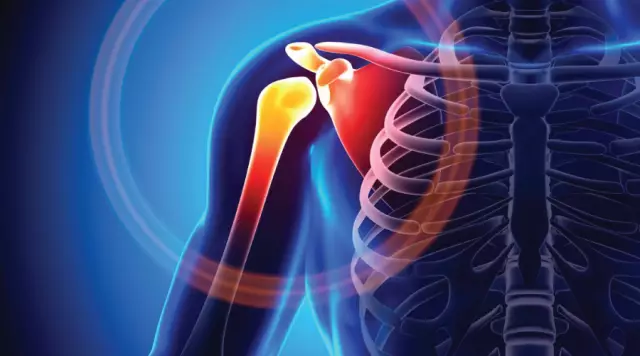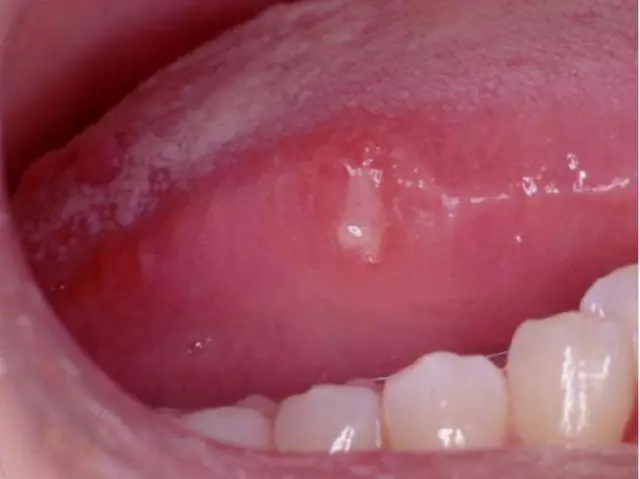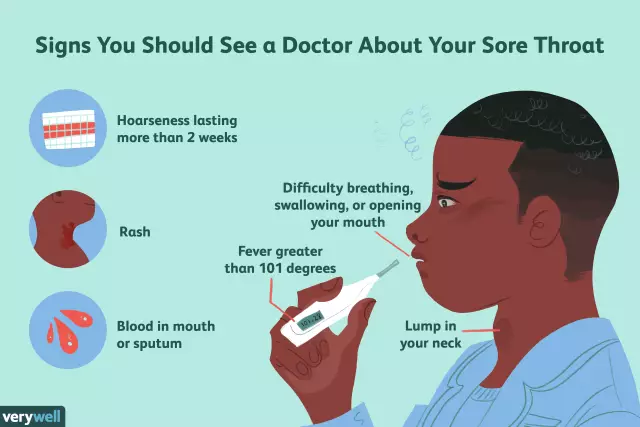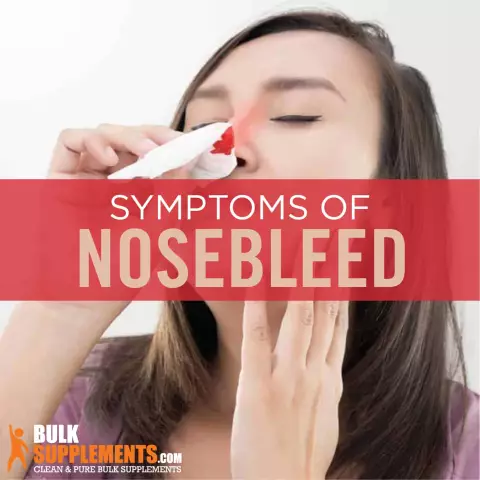- Author Rachel Wainwright [email protected].
- Public 2023-12-15 07:39.
- Last modified 2025-11-02 20:14.
Why does the elbow hurt

The elbow joint refers to complex joints, it consists of the following parts: radius, humerus and ulna. Essentially, these are three joints enclosed in a single joint capsule. The ulnar nerve passes through the joint and is close enough to the skin, passing between the tendons of the muscles of the forearm. Therefore, it is easy to "knock out" the elbow, accidentally hitting the radial nerve. The sensations of a person with a bruised elbow are similar to an electric shock, after which the hand remains immobilized for a short time. This is the simplest reason why elbow pains appear against the background of absolute health. Painful sensations in the joint have many reasons, leading to inflammatory processes in various tissues that make up the anatomical formation - the shoulder joint.
Why elbows hurt
The concept of "elbow" has two meanings. Both are applied to the upper limb. First, it is the length of the arm from the wrist to the elbow. Secondly, the elbow joint itself. Since the old measure of length is now obsolete, these parts of the hands are called the forearms. And pain in the elbow in medicine is determined by the localization of sensations in the elbow joint. The following reasons lead to this condition:
- Traumatic lesions;
- Arthrosis;
- Arthritis;
- Gout;
- Lesions of bones and articular surfaces (osteophytes, chondrocalcinosis);
- Tumor processes.
In addition to affecting the articular surfaces, pain in the elbow causes inflammation of the muscles and ligaments:
- Bursitis;
- Fasciitis;
- Epiconilitis;
- Tendinitis
- Cubital canal syndrome.
Diseases of the cardiovascular and nervous systems lead to pain in the elbow:
- Cardiac ischemia;
- Hemophilia;
- Osteochondrosis and intervertebral hernia;
- Ulnar nerve neuritis.
The relationship between the vascular, neuromuscular and skeletal systems is so tight that it becomes clear why the elbows hurt in the absence of joint tissue damage.
Elbow joint pain
Undoubtedly, dislocations, subluxations and fractures are accompanied by pain. Diagnosis of traumatic injuries is simple and is confirmed by X-ray examination.
It is much more difficult with the definition of arthrosis, which is a lesion of the cartilaginous plates of the articular surfaces. As a rule, pain in the elbow joint during degenerative processes of cartilage tissue occurs only with movements that are accompanied by an unpleasant crunch. The articular surface becomes swollen, but there are no clear signs of inflammation. In patients with arthrosis, the elbow hurts during flexion and maximum extension of the upper limb.
Arthritis is translated into Russian as "joint inflammation." Accordingly, it is accompanied by all the signs of an acute process. These are pain in the elbow, dysfunction of the joint, redness, swelling and fever in the area of the joint capsule.
Gout and chondrocalcinosis are, in fact, one phenomenon: deformation of the cartilaginous surfaces. Roughness on the smooth parts of the contacting joints increases friction and irritates the receptor apparatus. That is why elbows hurt in diseases associated with metabolic disorders.
The resulting tumors of muscle, nerve or bone tissue also squeeze the receptor field and the vessels that feed the elbow joint.
Inflammatory processes of connective and muscle tissues manifest themselves in the same way as lesions of the articular surfaces. Acute pathological changes, one way or another, are manifested by an intense pain syndrome. However, the elbow does not hurt at all when bending from microtraumas of the ligamentous apparatus. The disease is allocated in a separate form - epicondylitis. This is the so-called tennis elbow. Occurs in people not related to this sport.
With bursitis, a bulge appears in the area of the elbow joint, filled with inflammatory exudate. Outwardly, it resembles a hernia, is distinguished by sharp soreness and red-purple color.
Cubital tunnel syndrome, or tunnel syndrome, occurs when the ulnar nerve is compressed in the area of the ulnar canal. With nerve damage, pain in the elbow joint occurs regardless of physical activity. The main manifestation of pathology is a feeling of numbness, extending to the shoulder and little finger.
With coronary artery disease, elbow pain spreads to the left forearm. They are of an irradiation nature.
In hemophilia, as a result of blood clotting disorders, hemorrhages occur in the joint capsule. Blood elements irritate the articular surfaces and provoke the growth of granulations, which aggravate the pressure on the joint. Hemarthrosis develops, prone to suppuration and the formation of a cicatricial adhesive process. In hemophilia, pain in the elbow joint is acute and difficult to treat with non-narcotic pain relievers.
An intervertebral hernia, as a result of osteochondrosis, compresses the nerve bundles emanating from the spinal cord trunk. When a herniated disc appears in the thoracic region, pain is felt in the elbow on the affected side of the spine. A distinctive feature in the defeat of the nerve bundle is the prevalence of pain: from the shoulder girdle to the elbow joint. A patient suffering from a herniated disc may wake up at night from pain in the elbow, and this happens without any movement of the hand. Pain sensations begin in the neck area and instantly go to the elbow joint.
Ulnar neuritis often accompanies tunnel syndrome, but can develop on its own. The symptoms of nerve tissue inflammation are not limited to pain, but lead to loss of sensitivity and muscle tissue atrophy. With a protracted course of the disease, the muscles weaken so much that a depression in the form of a groove on the forearm forms between the ulna and the radius.
Elbow pain, treatment
If you feel pain in the elbow joint, you should consult a doctor. A traumatologist deals with joint pathology, and a neurologist deals with problems with motor activity.

In cases of injury, you need to know about the first aid that you need to provide to the victim. In case of pain in the elbows, first-aid treatment is limited to applying cold to the bruised place. For this, a hot water bottle with cold water or ice from the refrigerator will do. If a first aid kit is not available, an impromptu bandage in the form of a headscarf should be applied to ensure peace of the injured hand. Even a specialist cannot correct a dislocation of a complex joint without an X-ray examination, since there is a possibility of ligament rupture.
When the cause of elbow pain is known, treatment is prescribed by an appropriate physician. If suppuration or hemorrhage occurs in the joint, a puncture is performed, followed by pumping out the contents of the joint capsule.
Therapeutic treatment consists of prescribing pain relievers and anti-inflammatory drugs. With acute pain in the elbow, any physical exercise is contraindicated, but physiotherapy is effective.
Found a mistake in the text? Select it and press Ctrl + Enter.






